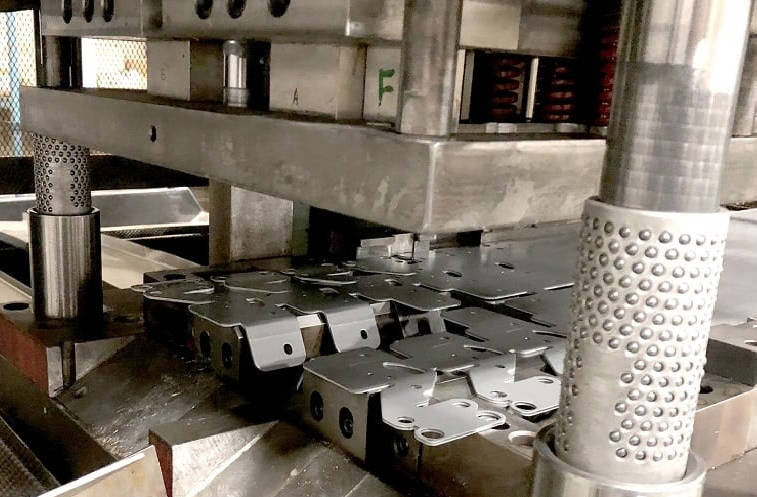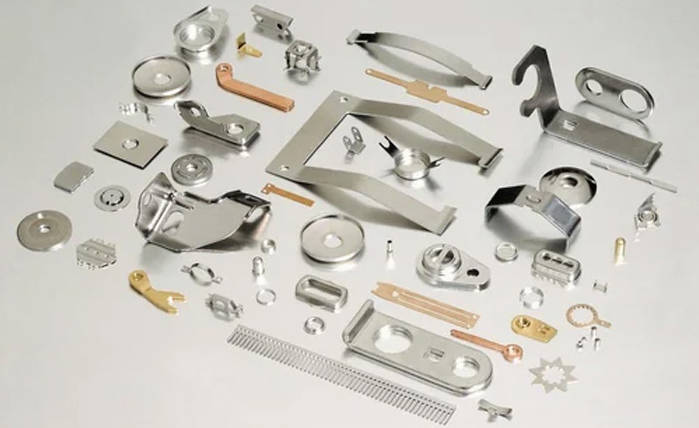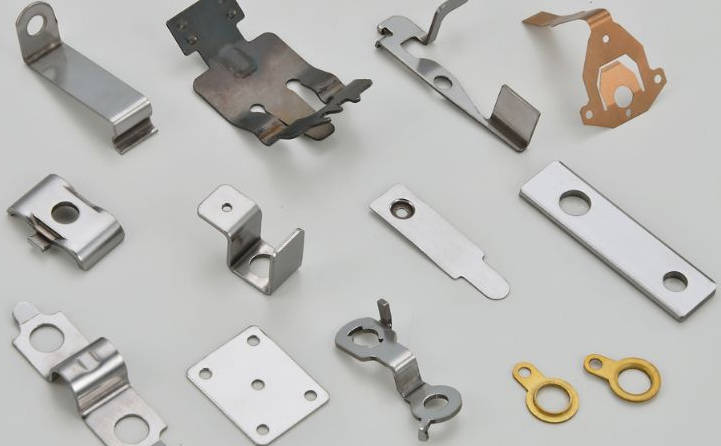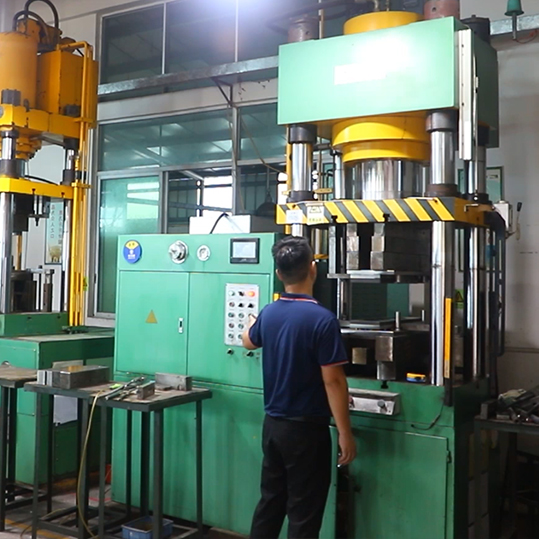I. Introduction
The landscape of modern manufacturing offers an expansive array of processes, each with unique capabilities and limitations. For businesses seeking to bring a new product to market or optimize an existing one, the initial challenge often lies in selecting the most appropriate fabrication method. This decision is not merely about cost; it profoundly impacts a component’s performance, design realization, and overall production efficiency.
For those requiring Metal Stamping Services, understanding the distinctions between various manufacturing techniques is paramount. While sheet metal stamping is a highly efficient and widely utilized process, alternative methods like powder metallurgy (PM) often arise as considerations, particularly for complex part geometries or specialized material requirements. Many potential clients might unwittingly consider processes that are suboptimal for their specific needs, leading to increased costs, compromised performance, or design restrictions.
This article aims to provide a clear, professional comparison of metal stamping and powder metallurgy. By focusing on their distinct material properties and inherent design freedoms, we intend to guide you through the decision-making process, ensuring you make an informed choice that aligns perfectly with your project’s demands. Our goal is to demystify these two powerful manufacturing approaches, ultimately helping you identify when to engage a Metal Stamping factory versus exploring PM.

II. Understanding Metal Stamping: The Foundation for Sheet Metal Parts
Metal stamping is a cold-forming manufacturing process that utilizes dies and presses to transform flat sheet metal into desired shapes. It’s a fundamental process in mass production, renowned for its efficiency and repeatability. The core operations involved in metal stamping can include:
- Blanking: Cutting out a flat piece of metal from a larger sheet.
- Piercing: Creating holes or cutouts within the blank.
- Bending: Forming angles or curves in the metal.
- Drawing: Forming a flat sheet into a three-dimensional shape like a cup or box.
- Coining: Applying significant pressure to create fine details or to flatten material.
- Forming: General shaping operations that don’t involve deep drawing.
Key Material Properties in Metal Stamping
The success of metal stamping heavily relies on the inherent properties of the sheet metal used.
- Ductility & Formability: These are perhaps the most critical properties for metal stamping. High ductility allows the material to undergo significant plastic deformation (bending, stretching, drawing) without fracturing. Formability refers to the ease with which a material can be shaped. Common materials like steel, stainless steel, aluminum, brass, and copper offer varying degrees of ductility, making them suitable for diverse applications.
- Strength-to-Weight Ratio: Stamped parts, made from sheet metal, often provide an excellent strength-to-weight ratio. This is particularly advantageous in industries like automotive and aerospace where weight reduction is crucial for fuel efficiency and performance.
- Surface Finish: Generally, stamped parts inherit the smooth and consistent surface finish of the raw sheet material. This often reduces or eliminates the need for extensive post-processing for aesthetic or functional requirements.
- Material Selection: The versatility of Metal Stamping Services extends to a vast range of materials, enabling their use across countless sectors.
Design Freedom in Metal Stamping
Metal stamping offers significant design freedom, but primarily within certain parameters:
- 2D Profiles & Shallow 3D Forms: Metal stamping excels at producing parts that are essentially flat or have shallow bends, simple curves, and relatively consistent wall thicknesses. Think of brackets, covers, washers, and connectors.
- High Precision & Repeatability: Once the dies are engineered, metal stamping delivers exceptional precision and repeatability, making it ideal for large production runs where consistency is paramount.
- Limitations: While versatile, metal stamping does have design limitations. It can be challenging to create highly intricate, multi-directional 3D geometries or features that require significant, complex material flow beyond basic drawing operations. Minimum bend radii and maintaining uniform wall thickness in deeply drawn parts are also considerations.
Typical Applications Suited for Metal Stamping
The ubiquity of metal stamping is evident in its diverse applications:
- Automotive: Brackets, body panels, internal components, connectors.
- Electronics: Enclosures, contacts, heatsinks, shields.
- Appliances: Panels, structural components, internal mechanisms.
- Hardware: Washers, fasteners, hinges.
- Medical Devices: Flat components, surgical instrument parts.
III. Exploring Powder Metallurgy: An Alternative for Complex, Net-Shape Components
Powder metallurgy (PM) is a distinctive manufacturing process that forms parts from metal powders. Unlike traditional metalworking, PM typically avoids melting the base material. The process generally involves three main steps:
- Powder Mixing: Precisely blending various metal powders and often lubricants or binders.
- Compaction: Pressing the mixed powder into a desired shape (a “green compact”) using a rigid die and punch system, often at high pressures.
- Sintering: Heating the green compact in a controlled atmosphere to a temperature below the metal’s melting point. This causes the metal particles to bond together, forming a solid, cohesive part.
- Secondary Operations: These can include sizing (for tighter tolerances), machining, infiltration (filling pores with another material), or heat treatment to enhance properties.
Key Material Properties in Powder Metallurgy
PM parts exhibit unique material characteristics that differentiate them from wrought metals:
- Tailored Properties: A significant advantage of PM is the ability to create custom material compositions by mixing different metal powders. This allows for precise control over alloy chemistry and microstructure, enabling the engineering of specific properties that might be difficult or impossible to achieve with traditional casting or forging.
- Porous Structure: PM parts inherently possess some degree of porosity. This can be a functional advantage (e.g., in self-lubricating bearings where pores hold oil) or a potential limitation (impacting strength and ductility if not managed through higher density sintering or post-processing).
- Hardness & Wear Resistance: PM components, especially those made from ferrous alloys, often exhibit excellent hardness and wear resistance, making them ideal for gears, cams, and structural components in demanding environments.
- Ductility: Generally, PM parts have lower ductility compared to their wrought (stamped) counterparts due to their porous structure. However, advanced PM techniques like hot isostatic pressing (HIP) can achieve near-full density, significantly improving ductility and strength.
- Material Selection: PM accommodates a broad spectrum of materials, including ferrous alloys (steel, stainless steel), copper, aluminum, nickel, and various high-performance or exotic alloys.
Design Freedom in Powder Metallurgy
Powder metallurgy shines in its ability to produce highly complex, net-shape, or near-net-shape components:
- Complex 3D Geometries & Intricate Features: PM excels at creating complex internal geometries, undercuts, blind holes, and integrated features like gears, splines, and cams directly in the compaction process. This significantly reduces the need for extensive secondary machining.
- Reduced Secondary Machining: Due to its net-shape capabilities, PM often minimizes or eliminates post-processing steps that are typically required for components made by other methods, leading to material and cost savings.
- Limitations: Despite its design freedom, PM does have constraints. Tooling costs for the compaction dies can be substantial, especially for very complex parts. Part size is often limited by the capabilities of compaction presses. Achieving extremely thin walls or exceptionally fine surface details can also be challenging compared to machining.
Typical Applications Suited for Powder Metallurgy
PM is frequently chosen for components requiring intricate shapes or specific functional properties:
- Automotive: Gears, bearing caps, valve seat inserts, cam lobes, magnetic components.
- Appliances: Components for washing machines, refrigerators, power tools.
- Industrial: Bushings, filters, porous bearings, structural components.
- Medical: Surgical instrument parts, dental components.
IV. Direct Comparison: Stamping vs. Powder Metallurgy
To help you decide between Metal Stamping Services and powder metallurgy, let’s compare them across several critical factors:
| Feature | Metal Stamping | Powder Metallurgy |
| Part Geometry & Complexity | Ideal for 2D, flat, or shallow drawn/bent parts, uniform wall thickness. | Excels at intricate 3D shapes, internal features, undercuts, net-shape. |
| Material Properties | High ductility, excellent strength-to-weight, good surface finish from sheet. | Tailorable properties, good hardness/wear, controlled porosity, lower ductility. |
| Tooling Cost | High for complex progressive dies, but efficient for high volumes. | High for compaction dies, but efficient for high volumes due to net-shape. |
| Per-Part Cost | Very low for high volumes. | Competitive for medium-to-high volumes, especially if complex machining saved. |
| Waste Material | Minimal (scrap can be recycled), efficient material utilization from sheet. | Very low (near-net-shape), but powder production can be energy-intensive. |
| Lead Time | Shorter for simpler tooling, faster production runs once dies are ready. | Longer initial lead times for complex tooling, but quick per-part production. |
| Surface Finish | Excellent as-stamped, often requiring minimal post-processing. | Matte or slightly rougher as-sintered; can be improved with post-processing. |
| Strength | High strength from wrought (deformed) material. | High strength, especially for dense parts; can be tailored. |
| Ductility | Generally very good. | Typically lower, though improving with advanced PM techniques. |
| Typical Applications | Brackets, enclosures, connectors, panels, hardware. | Gears, bushings, cams, porous components, complex small parts. |
A. Part Geometry & Complexity
- Metal Stamping: If your part is primarily flat, or involves shallow bends, draws, or cuts from a sheet of metal, metal stamping is almost certainly the more economical and efficient choice.
- Powder Metallurgy: When your part requires complex internal features, intricate 3D shapes that are difficult to machine, or “net-shape” parts that minimize subsequent operations, PM becomes a strong contender.
B. Material Properties & Performance
- Metal Stamping: If your application demands high ductility, excellent strength-to-weight ratio, and a smooth surface finish, stamping from high-quality sheet metal is often superior.
- Powder Metallurgy: If you need specific hardness, wear resistance, controlled porosity (e.g., for self-lubrication), or unique alloy compositions that are difficult to achieve otherwise, PM offers significant advantages.
C. Tooling Cost & Production Volume
Both processes involve significant upfront tooling costs.
- Metal Stamping: While the initial investment in progressive dies for Metal Stamping factory can be substantial, the per-part cost for very high volumes is exceptionally low due to the speed and efficiency of the presses.
- Powder Metallurgy: PM tooling (compaction dies) also represents a considerable investment. However, for complex parts that would otherwise require extensive machining, PM can become highly cost-effective in medium to high volumes due to its net-shape capabilities, reducing material waste and post-processing labor.
D. Waste Material & Sustainability
- Metal Stamping: Generates scrap from blanking and piercing, but this scrap is typically high-quality and easily recycled back into raw material, making it a very efficient process.
- Powder Metallurgy: Characterized by “near-net-shape” production, meaning very little material is wasted during the forming process. However, the initial production of metal powders can be energy-intensive.
E. Lead Time & Flexibility
- Metal Stamping: Once the dies are built and proven, production runs are extremely fast, leading to shorter lead times for large batches. Changes to existing tooling can be costly and time-consuming.
- Powder Metallurgy: The initial tooling phase for PM can be longer, especially for complex designs. However, once set up, high-volume production is very efficient. Design changes typically require new tooling.
V. When to Choose Metal Stamping
For businesses actively seeking Metal Stamping Services, understanding when this process is the optimal choice is crucial.
A. Ideal Scenarios for Stamping:
- Parts with relatively uniform wall thickness: If your design is predominantly flat or has consistent thickness throughout, stamping is ideal.
- High production volumes of flat or shallow drawn/bent components: When you need millions of identical, dimensionally stable parts with consistent properties, metal stamping is unparalleled in speed and cost-effectiveness.
- When high ductility and strength-to-weight ratio are critical: If your application requires a part that can withstand bending or moderate deformation without fracturing, and needs to be lightweight yet strong.
- When minimal post-processing and excellent surface finish are desired: The “as-stamped” finish is often good enough, reducing subsequent finishing costs.
- Cost-sensitive projects with high quantities: The high initial tooling cost is quickly amortized over large production runs, making the per-part cost very attractive.
- High-volume manufacturing: Many industries rely on metal stamping for mass production due to its speed and efficiency.
B. Common Misconceptions/Questions Addressed:
- “Can stamping make very complex 3D parts?” While modern stamping techniques allow for more complex forms, it generally cannot achieve the intricate, multi-axis 3D geometries or internal features that are routine for powder metallurgy. If your part has complex internal channels, undercuts, or integrated gear teeth, PM might be a better fit.
- “Is stamping cheaper for low volumes?” Not typically. While simple stamping operations might be feasible for low volumes with less complex tooling, the high initial investment in robust progressive dies for intricate parts means that the cost per part remains high until a significant volume is reached. For low-volume prototyping or very small runs, alternatives like laser cutting or CNC machining might be more economical.
- “What kind of strength can I expect from stamped parts?” You can expect excellent strength and integrity from stamped parts, as they are formed from wrought (pre-worked) sheet metals, which inherently possess good mechanical properties due to their grain structure. The cold working process during stamping can even enhance certain properties like tensile strength.
VI. Conclusion: Making an Informed Manufacturing Decision
Choosing the right manufacturing process is a pivotal decision that directly impacts the success of your product. There is no universally “best” process; rather, the optimal choice is always contingent on a precise evaluation of your project’s unique requirements.
Key Takeaways for Metal Stamping Service Users:
- Consider Part Geometry First: Is your component predominantly a 2D profile with bends and shallow draws, or does it demand intricate, complex 3D features and internal structures?
- Evaluate Performance Needs: Do you prioritize ductility and surface finish, or are properties like specific hardness, wear resistance, and controlled porosity more critical?
- Assess Volume and Cost: Project your anticipated production volume. High volumes typically favor the low per-part cost of stamping, while PM can become competitive for medium-to-high volumes where its net-shape capabilities significantly reduce machining costs.
Ultimately, navigating these choices can be complex. For expert guidance and to explore the most suitable manufacturing solution for your specific part, we highly recommend consulting with experienced Metal Stamping Services providers. A reputable Metal Stamping factory will be able to analyze your part design, material requirements, and production volume to offer an accurate assessment and a competitive quotation, ensuring your project proceeds with the most efficient and cost-effective approach.






